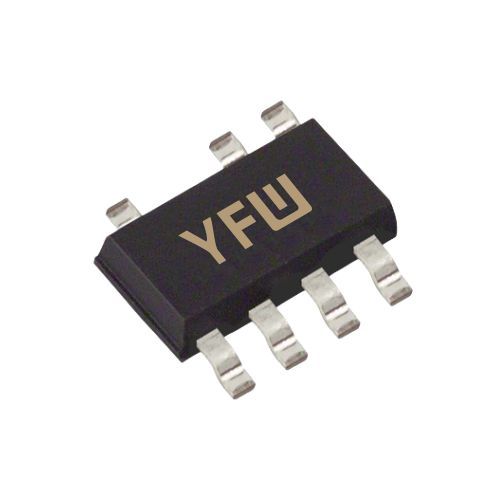A diode consists of two semiconductor regions: P-type (positive) and N-type (negative), joined to form a PN junction . The P-type region is doped with trivalent impurities (e.g., boron), creating an excess of holes (positive charge carriers), while the N-type region is doped with pentavalent impurities (e.g., phosphorus), generating an abundance of electrons (negative charge carriers) . At the PN junction, a depletion region forms due to the diffusion of electrons from the N-region to the P-region and holes from the P-region to the N-region. This depletion region lacks free charge carriers and acts as an insulator under equilibrium conditions .
The functionality of a diode hinges on its response to applied voltage:
When a positive voltage is applied to the P-region (anode) and a negative voltage to the N-region (cathode), the diode enters forward bias . This reduces the depletion region’s width, allowing majority carriers (holes in P-type and electrons in N-type) to recombine across the junction. Once the applied voltage exceeds the forward voltage drop (≈0.7V for silicon diodes), the diode conducts current efficiently from the anode to the cathode . YFW’s diodes, such as the SS34 Schottky diode, exhibit a low forward voltage (550mV) and high rectified current (3A), making them ideal for low-power, high-efficiency applications .
In reverse bias, the anode is connected to a negative voltage, and the cathode to a positive voltage. This widens the depletion region, creating a high-resistance barrier that blocks current flow . While a small reverse leakage current (e.g., 10µA for YFW’s SF36 fast recovery diode at 400V) exists due to minority carriers, the diode remains non-conductive until the breakdown voltage is reached . YFW’s diodes are engineered to withstand high reverse voltages, ensuring robust performance in demanding environments.
YFW offers a diverse portfolio of diodes tailored to specific industry needs:
These diodes convert alternating current (AC) to direct current (DC) in power supplies. YFW’s 1N4001WS and RL207 series are widely used in general-purpose rectification, providing reliable performance at up to 1000V .
With short reverse recovery times (e.g., 35ns for YFW’s SF36), these diodes excel in high-frequency switching applications like inverters and LED drivers .
Featuring low forward voltage drops (e.g., 550mV for SS34), SBDs minimize power loss in high-current, low-voltage circuits such as automotive electronics and battery chargers .
Designed to operate in reverse breakdown, YFW’s zener diodes (e.g., P6SMB300CA) stabilize voltages in power regulation systems, ensuring consistent output despite input fluctuations .
YFW’s TVS diodes, like the SMAJ5.0A, protect sensitive electronics from voltage spikes, making them critical in telecommunications and industrial equipment .
YFW’s diodes are built on advanced GPP (Glass Passivation Process) technology, enhancing thermal stability and mechanical strength. The company’s products undergo rigorous testing to meet international standards (ISO 9001, ISO 14001) and certifications (UL, ROHS), ensuring reliability in harsh conditions . For example, the MUR460E fast recovery diode withstands 175°C temperatures, addressing thermal degradation issues in LED power supplies .
YFW also offers custom solutions, collaborating with clients to develop diodes for niche applications. Their SRA4E series, designed for high-temperature environments, outperforms competitors in cost and efficiency, reducing reliance on bulky heat sinks .
The diode market is evolving toward silicon carbide (SiC) diodes, which offer superior efficiency and power density compared to silicon-based counterparts . YFW is actively investing in SiC research to stay ahead of industry demands, ensuring its products remain at the forefront of innovation.
Diodes are indispensable components in electronics, and understanding their working principles is key to designing efficient circuits. YFW’s commitment to quality, innovation, and customer-centric solutions has positioned its diodes as a trusted choice across industries. Whether for rectification, voltage regulation, or surge protection, YFW’s products deliver the performance and reliability required for modern applications.
